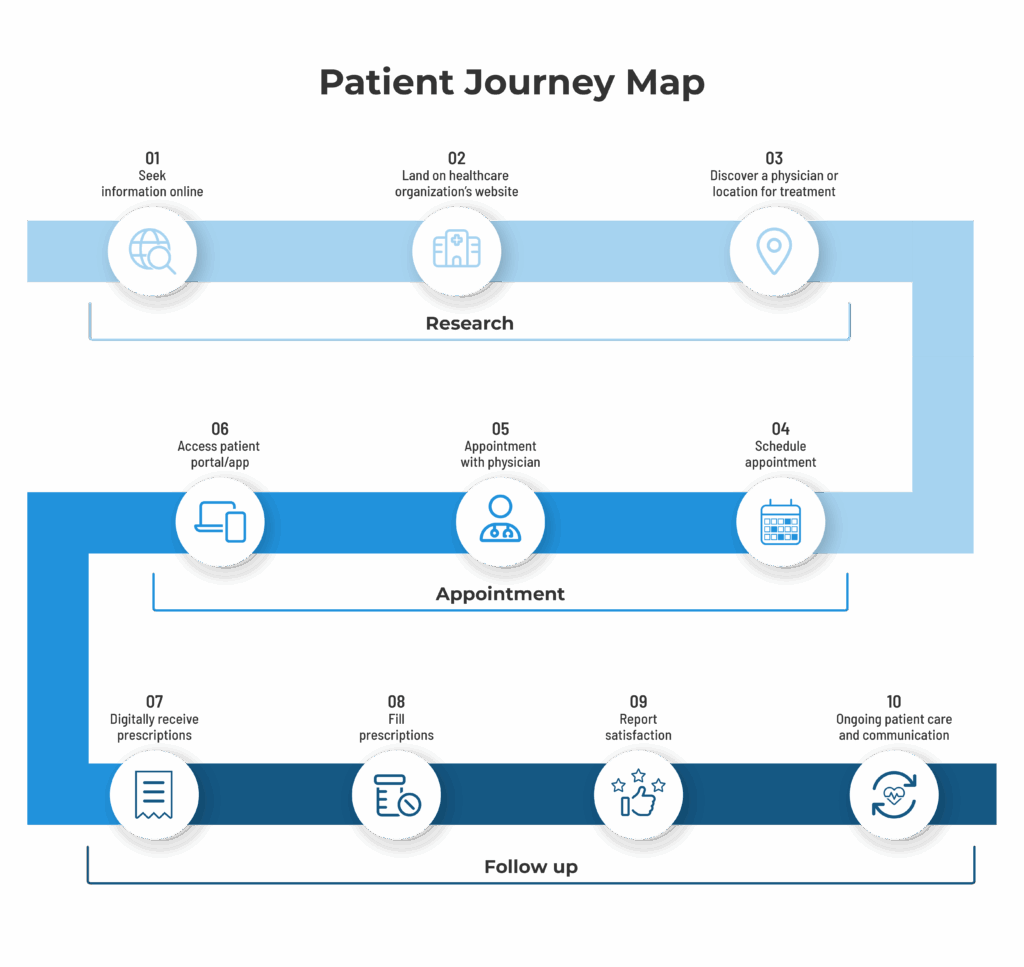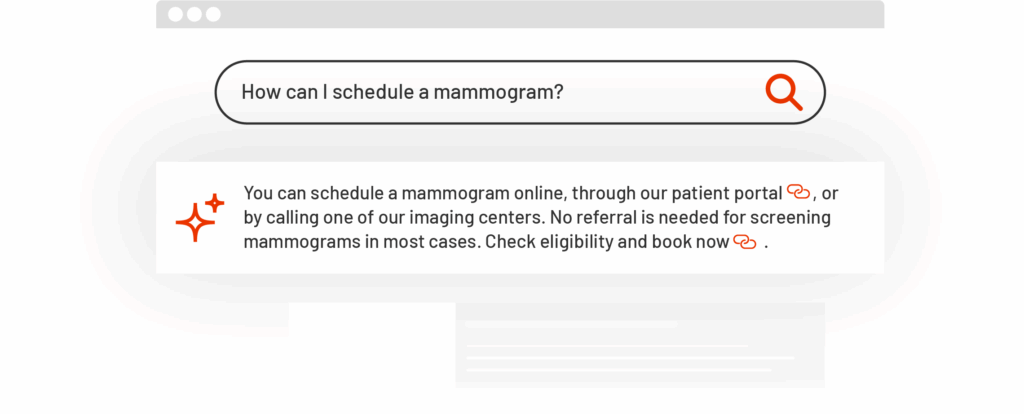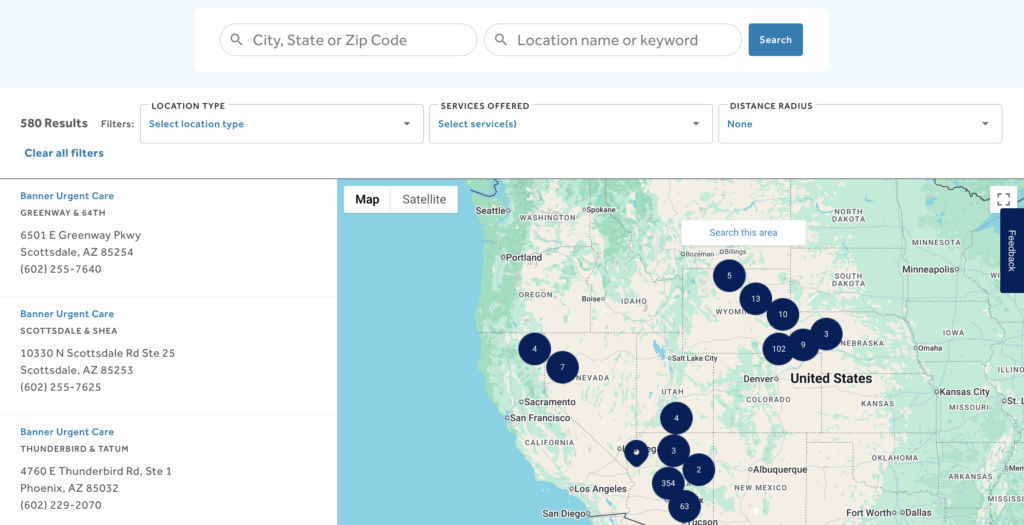July 30, 2025
Chris Pace
|
In healthcare, a patient’s first experience with your brand isn’t always in a clinic or waiting room. It’s often on your website.
But instead of a clear path to care, many visitors encounter confusing menus, clunky search tools and outdated content. The digital front door? Too often, it feels like a maze.
That’s where conversion rate optimization (CRO) for healthcare websites becomes essential.
CRO isn’t just about improving marketing performance. In healthcare, it’s a vital strategy for modernizing access, boosting self-service and guiding people to the answers, or appointments, they need. And the best part? It doesn’t require more ad spend. It starts by making what you already have work more efficiently.
What Conversion Rate Optimization Actually Looks Like in Healthcare
Let’s start with what a conversion means in this context.
It could be an appointment booked. A provider profile viewed. A top FAQ answered. Every interaction, search, scroll or click is a chance to help someone move one step closer to care. Some of those individual actions may seem low-calorie in the big picture, but each of those positive touchpoints, even if they’re micro conversions, amounts to an improved experience and conversion path.
A well designed user interface can boost conversion rates by up to 200%, and a strong overall user experience strategy can increase conversion by as much as 400%. – UserGuiding 2025
Optimizing conversion rates means designing each of those touchpoints to do exactly that: convert. It’s not just about CTAs and page speed. It’s about whether your site helps real people solve real problems in the moments that matter.
Want to learn more about micro conversions vs macro conversions and more general definitions about CRO? Our general CRO blog has you covered.
Where the Patient Journey Falls Apart
Unfortunately, many health systems lose people before they ever convert.
Often, the website experience is the problem. Patients encounter friction at critical moments, such as:
- “Find a Doctor” tools that return too many irrelevant results.
- Internal searches that lead to dead ends.
- FAQ pages with no real answers and no way to ask follow-up questions.
Just look at this sample patient journey:

So many of these essential steps should live online, in a frictionless experience where patients can access the information and services they need.
Research shows that 68% of patients say they’re more likely to choose a provider that offers the ability to book, change or cancel appointments online. – Kyruus “Patient Access Journey Report”
Additionally, patients bounce when they can’t find what they need within two clicks. That’s a massive missed opportunity and often, one that goes unseen.
What’s worse: many teams know these issues exist but are stuck. Static page structures, hard-coded templates and slow dev cycles leave marketers waiting on IT just to make basic updates. Optimization grinds to a halt.
The Role of Site Search: Your Most Underrated CRO Lever
Onsite search is often treated as a utility. But in high-performing healthcare sites, it’s treated like a primary means of navigation.
Search is one of the most important conversion triggers on your site. It signals intent, reveals patient needs and—when done well—gets people exactly where they need to go.
Also consider this: How often do we wrestle with site visitors to drop us essential nuggets of information when trying to collect that all-important first-party data? First-party data is the golden egg for marketing and website experience teams.
But not every visitor wants to fill out your form or take your lower funnel action right off the bat. What they do want is to discover information, and their favorite method for doing so is through your search bar.
They’re asking questions and typing in exactly what they need to find. It’s free, first-party data that provides a window into your visitors’ intent and helps your team craft a journey that will deliver a better experience than any navigation menu you could spin up.
The First Step Toward More Conversions: A Site Search Solution
Onsite search optimization is not something marketing and website experience teams constantly think about. Frankly, they often don’t have the time to submit tickets to their IT teams and wait for long development cycles.
At the same time, they don’t have the tooling to quickly make site search adjustments based on timely needs or visitor behavior patterns. They lack the agility in their tech stack.
That’s where a solution like SearchStax Site Search makes all the difference.
Need to update messaging for a seasonal campaign? Tweak your promoted content in a couple clicks. Want to drive more traffic to specific resource pages? Tune search relevance. SearchStax gives marketers a simple interface to optimize continuously without waiting weeks for backend updates.
And to take things even further, Smart Answers allows you to surface instant, AI-generated responses at the top of the search results—giving patients fast answers to common questions and reducing friction even more. Think: billing details, visiting hours or new patient paperwork. The smarter your search experience, the more confident and satisfied your visitors feel.
Turning your search bar from a method of navigating links, to an actual source of answers has so many positive downstream effects:
- Reduces call volume
- Drives self-service
- Boosts visitor satisfaction

Real Impact: What Banner Health Discovered
Banner Health’s digital team put site search optimization into practice to boost their conversion rates and improve the overall user experience.
They have enabled over 1 million sessions through site search. And by shifting how visitors navigate the site, from clicking through menus to simply searching, they’ve seen higher engagement, better completion rates and improved patient satisfaction.

Search has become the main way people explore services, find locations and access answers. CRO isn’t a side project for Banner—it’s core to their digital strategy.
Action Steps: Where to Start with Site Search
Ready to make your own digital experience more effective? Here’s where to begin:
- Audit your search data. Look at exit rates and zero-result queries; those are missed conversions.
- Use built-in analytics from a site search solution like SearchStax to uncover where patients are dropping off in their journey to discover content.
- Pilot Smart Answers to connect current and prospective patients with direct information on your highest-volume queries. Think: billing, visiting hours, new patient forms.
Iterate fast. With SearchStax, you can launch updates, test messaging, and shift pathways in real time—no dev tickets required.
Conversion Rate Optimization That Connects
In healthcare, small digital changes can lead to major impact. Helping a visitor find the right provider faster or answer a simple insurance question without calling in are meaningful wins that lead to bottomline conversions.
Conversion rate optimization has more benefits than strictly performance. Improving your website experience connects patients with the care they need more quickly, improves outcomes and makes your digital front door feel more like a front desk.
SearchStax helps marketing and digital teams move fast, test often and make every visit count.




